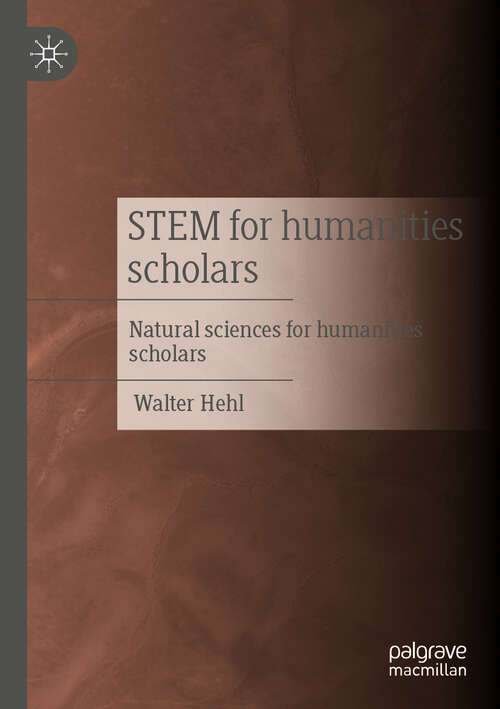STEM for humanities scholars: Natural sciences for humanities scholars
By:
Sign Up Now!
Already a Member? Log In
You must be logged into Bookshare to access this title.
Learn about membership options,
or view our freely available titles.
- Synopsis
- The beginnings of natural sciences and humanities in antiquity were shared, but by the end of the 19th century, the natural sciences had developed dominantly through their successes. In response to this dominance, the philosopher Wilhelm Dilthey coined the term Geisteswissenschaften (humanities) in 1883. On the other hand, it was clear in the natural sciences that entire areas of the mind were inaccessible to them, such as sensory experiences and consciousness. This book attempts to show that this sharp divide has softened. Physics has become more intellectual, and the technology of the mind has developed: fundamentally, this is information technology. Physics for the inanimate and computer science (with a physical basis) for all living things and for the computer together explain the world. With mathematics as its foundation and tool, this results in STEM (MINT in German: Mathematik, Informatik, Naturwissenschaft, Technik). An intellectual worldview without STEM is not possible with dignity. There are several STEM fields that are directly useful to the humanities. Examples include the principle of the laser and the concept of entropy. A third intellectual domain remains outside: art. But art and STEM are not opposites.
- Copyright:
- 2025
Book Details
- Book Quality:
- Publisher Quality
- ISBN-13:
- 9783658490324
- Related ISBNs:
- 9783658490317
- Publisher:
- Springer Fachmedien Wiesbaden
- Date of Addition:
- 08/25/25
- Copyrighted By:
- The Editor
- Adult content:
- No
- Language:
- English
- Has Image Descriptions:
- No
- Categories:
- Nonfiction, Science, Philosophy
- Submitted By:
- Bookshare Staff
- Usage Restrictions:
- This is a copyrighted book.
